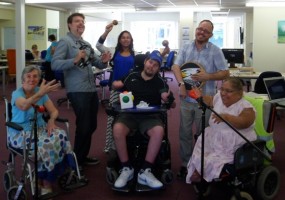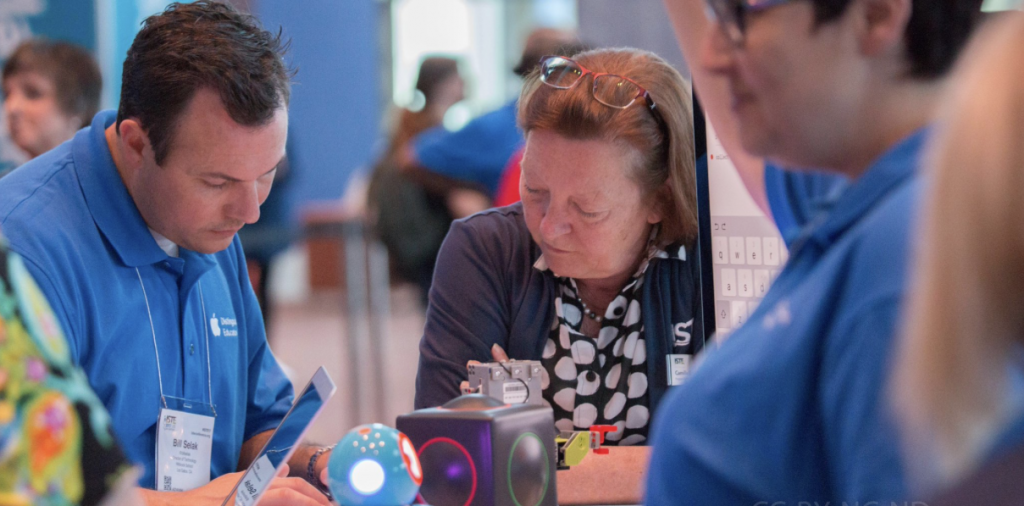Did you know, music accesses different parts of the brain than language? And so music can be used to communicate or engage with someone who has been diagnosed with dementia. Even if they no longer speak or respond to other people’s words.
Music is revolutionising dementia care. And we’ve seen some amazing breakthroughs with Skoog and how it has helped users with dementia.
 This is a short interview with Val Sprott, about how she uses Skoog with different service users at Compaid. Compaid is the leading charity providing services to disabled people in the South east of England.
This is a short interview with Val Sprott, about how she uses Skoog with different service users at Compaid. Compaid is the leading charity providing services to disabled people in the South east of England.
“Compaid, the charity I work for, has been using Skoog out and about in the local and wider community. Especially in residential care homes, as well as in our training Centre in Paddock Wood, Kent.”
Music and Dementia
It has proved useful across a range of different service users from those with physical and/or cognitive disabilities to older clients living with Dementia of different kinds.
An example of the Skoog’s benefits for those who face physical challenges can be illustrated by one client who has very dainty limbs. She finds she is able to get her hands and arms right around the Skoog very easily when it is set up on a table in front of her.
It is also a great resource when we are working with people with dementia encouraging them to think about how they pressing or holding the Skoog. Sometimes we divert into other types of activities with this.
For example, a kind of ‘Simon Says’, where we might play a particular pattern on the Skoog and then encourage the client to follow. Starting with simple sequences and expanding and elaborating those as we play. And because the Skoog is so intuitive to use it is very much a ‘two way’ interactive game’, where the client can be the one building the sequence for us to follow as well.
Relaxed awareness
One of the most interesting aspects of Skoog is the way it does encourage people to become involved in the interaction and this is particularly effective when working with clients with dementia.
You can almost see them entering a different form of relaxed awareness. Especially when working with particular sounds. Notably environmental sounds such as the ‘seashore’. This has lovely soft tones and you can see clients beginning to picture themselves in that place. Extending their awareness beyond the present and often engaging memory.
Age UK discuss the benefits of music and dementia.
Creating sound
Another great feature of the Skoog extends from the tactile control of the sounds that goes beyond simple ‘triggering’. Clients can play a range of short or longer more extended sounds by touching the Skoog in different ways. This promotes awareness of their actions and how they can influence their environment. Simply by creating sounds of different durations and dynamics.
Using Skoog in the care home environment with elderly clients has had further reaching effects outside of the direct benefits for the clients engaged in the Skoog work. Staff have commented on how this type of technology has been helpful to them in observing and assessing residents abilities, awareness and engagement with the activity.
“It is an excellent instrument, not just something for entertainment. You can use it alongside acoustic instruments and it doesn’t sound out of place. It will also sit happily alongside other technology based instruments as well creating a real sound experience.”
We have lots of plans for Skoog at Compaid. This year we are intending to incorporate it into something that is going to be quite massive. Creating an original piece of music using a mix of technological and standard instruments – a real ‘Concerted Effort.’ Where Skoog will be playing a central role in in delivering the project, so watch this space! http://www.compaid.org.uk
“It is a great piece of kit!”
Thanks Val, if you have any Skoog stories to share please get in touch here.
For more interesting stories and articles from Skoogmusic, subscribe to our blog:

